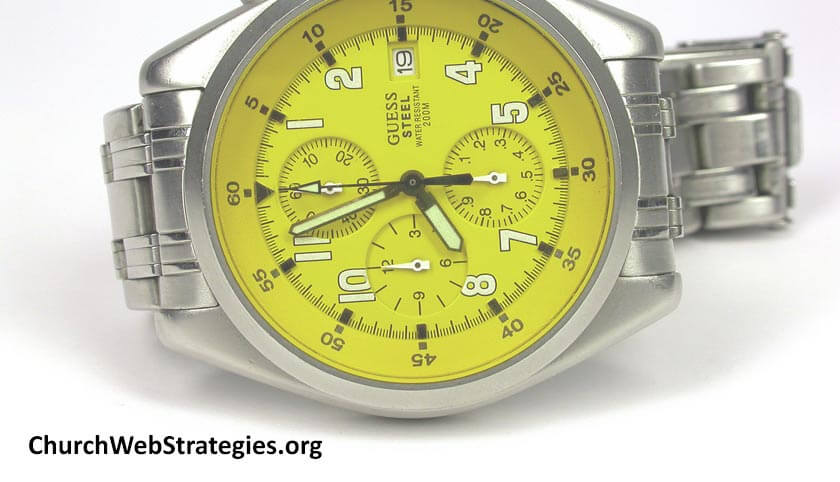Have you ever heard of the three click rule? It states that all content on your website needs to be within three clicks of the home page. Thankfully many people realize that this “rule” is a myth. The number of clicks does not frustrate a user. It is the inability to find the answers to the question they have. When a visitor lands on your website, they want their questions answered as soon as possible. This article will explore ways to reduce the time it takes to direct visitors to the answers they seek.
Good Navigation
The organization of your site has a huge impact on how quickly visitors find information. Avoid organizing pages by your internal ministries. Focus on answering visitor questions. Your pastors, ushers, greeters, and secretaries are great resources. They deal with visitors often, and can give great insight to the categories of questions they field.
Clear Vocabulary
A non-believer goes to someone’s house to enjoy their company. However Christians visit and partake in fellowship. Alright, that may have not been a great joke, but you get the point. Church jargon may make sense to your congregation. But a visitor to your website may not understand what you are saying. Do not confuse users. Use clear and concise words on your site. Use a tool such as the Hemingway App to help. It helps simplify language and fix grammar mistakes.
Optimized Pages
I wrote an entire article about optimizing your pages for speed, so I will not go into great detail. Just remember that you frustrate a user when they navigate to the incorrect page. They will be even more upset when that incorrect page also takes a long time to load.
Fast Servers
If you buy hosting for your website, invest in a plan that offers fast, reliable service. One key feature to look for is a content delivery network (CDN). A CDN is a network of servers spread out over a large geographic area. They deliver your content to users from the server that is closest to them. If you run your own servers, be sure to optimize your web services. Enable features such as file compression and caching to further boost performance.
Thorough SEO
Probably the best way to get people to the proper page is to drop the user directly on it. Search engine optimization tools such as proper page structure and semantics inform crawlers what is most important on the page. Use other mechanisms like keyword density to further tell a search engine exactly what each page is about. This reduces the time a visitor spends searching on your site to zero, which is the best result of all. Check out my article on SEO for more information.
Action Item
I assume you read all these items in this article and are considering doing at least one of them. Some are quick updates. Others need research and testing. Still others are large multi-week projects. If you are a smaller web team, this may mean another project is on hold. It might mean content updates slow down. Yet I hope you still push to do them. Social media, advertisements, and requests from the pulpit are driving people to your website. Make it a fast and easy experience for them, and they are likely to return.
Image courtesy of Bruno Mizogutti

